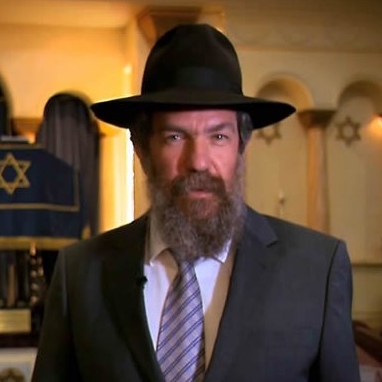
News

Lag B’Omer finds the fire within
RABBI DOVID HAZDAN
I remember the scene: humans of every ilk – runners, skaters, people walking dogs, dogs walking people, skateboarders, tourists, and the much anticipated parade of real-life elephants. There were people on soap boxes, espousing political opinion.
I wore my black hat and jacket in the blazing sun, and somehow blended into the great diversity of people and persuasion. I was intrigued by the atmosphere of tolerance and acceptance that made me feel at home amidst the mayhem.
Reflecting afterwards, I realised that the tolerance shown on the Venice Boardwalk wasn’t born out of love and brotherhood, but indifference. Everyone was too caught up in themselves to even notice the men saying the Shema in tefillin.
We are about to celebrate the powerful and mystical festival of Lag B’Omer on Monday and Tuesday, 11 and 12 May.
This festival commemorates events in the life of Rabbi Akiva and his students. The Talmud teaches us that these students didn’t practice adequate mutual respect, and tragically lost their lives in a plague. In just more than a month, Rabbi Akiva lost 24 000 students. The plague came to an end on Lag B’Omer, a cause for gratitude and celebration.
Rabbi Akiva’s great teaching was to love your neighbour as yourself. He saw this as the cardinal principle of the Torah. It’s strange that his own students seem to have missed his key message. Why weren’t they imbued with the mission statement of their teacher?
Actually, it was the very fact that they were so passionate and focused on the mitzvah (commandment) to love your fellow as yourself that led to their failure. Had they been indifferent towards each other, it wouldn’t have been a problem. But, in fact, the care and love that they had for each other compelled them to direct each other with unrestrained zeal. They felt that it was dishonest to embrace a view that they regarded as a deficient perspective of their master’s teachings.
“G-d is exacting to a hairsbreadth with the righteous.” Because of the calibre of the students of Rabbi Akiva, Hashem judged them by the highest standards, which resulted in the devastation of the plague.
What’s the message that we can derive from the students of Rabbi Akiva and the story of Lag B’Omer?
On the one hand, we need to learn to care for one another intensely. Our tolerance should never be the product of detached indifference. We need to be deeply concerned to enlighten and teach meaning, truth, and purpose. We need to care to our very core about having a positive impact on our neighbours.
But at the same time, we can’t let this diminish the respect and love we have for one another. Rather than standing in judgement, we need to accept our fellow human beings and embrace them with empathy and understanding.
For a variety of reasons, children would play with a bow and arrow on Lag B’Omer. The bow represents the rainbow, G-d’s sign of his covenant that he will never destroy the world. Others attribute the custom to the time of the Romans, who had banned the study of Torah. At that time, teachers and students would disguise their intention to learn Torah by pretending that they were venturing into the forest to hunt with bows and arrows.
The message of the bow lies in the fact that it extends our reach way beyond the length and strength of our arm. The principle of the bow precedes rocket propulsion. It’s predicated on the fact that the more that you draw the arrow towards yourself, the further it will reach.
Chassidus derives the lesson that the closer we draw the tension inwards, towards our own heart, the more powerfully we can affect the world beyond. Social influence begins by journeying into ourselves.
This year, we won’t be at the community-wide schmooza (get together) celebration in the Great-Park forest. We will celebrate together on Zoom on Monday night. But let’s not allow physical social distancing to diminish one iota of our passion, love, and concern for one another.
- Rabbi Dovid Hazdan is the rabbi at Great Park Synagogue and the dean of Torah Academy.




